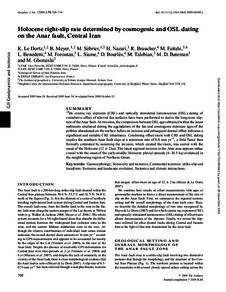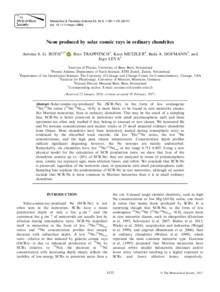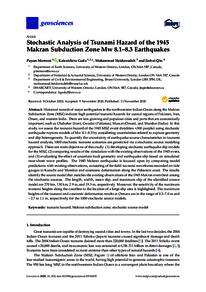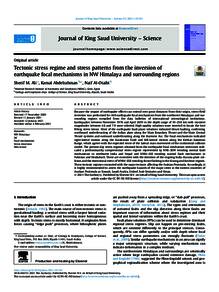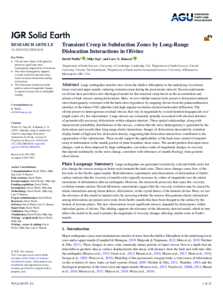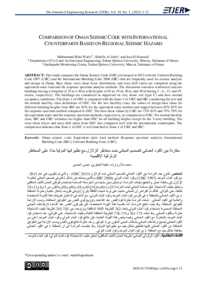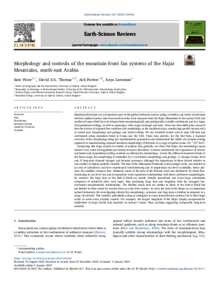Document
Holocene right-slip rate determined by cosmogenic and osl dating on the anar fault, Central Iran.
Identifier
DOI: 10.1111/j.1365-246X.2009.04309.x
Contributors
Meyer, B., Author
Sebrier, M., Author
Nazari, H., Author
Braucher, R., Author
Fattahi, M., Author
Benedetti, L., Author
Foroutan, M., Author
Siame, L., Author
Bourles, D., Author
Talebian, M., Author
Bateman, M. D., Author
Ghoraishi, M., Author
Publisher
Elsevier.
Gregorian
2009-11
Language
English
Subject
English abstract
Be cosmic ray exposure (CRE) and optically stimulated luminescence (OSL) dating of cumulative offset of alluvial fan surfaces have been performed to derive the long-term slip-rate of the Anar fault. At two sites, the comparison between OSL ages obtained within the latest sediments emplaced during the aggradation of the fan and cosmogenic exposure ages of the pebbles abandoned on the surface before its incision and subsequent dextral offset indicates a significant and variable CRE inheritance. Combining offset risers with CRE and OSL dating implies the southern Anar fault slips at a minimum rate of 0.8 mm yr-1, a little faster than formerly estimated by assuming the incision, which created the risers, was coeval with the onset of the Holocene (12 ± 2 ka). The latest regional incision in the Anar area appears rather coeval with the onset of the early-middle Holocene pluvial episode (6-10.5 ka) evidenced in the neighbouring region of Northern Oman.
Member of
ISSN
0956-540X
Resource URL
Category
Journal articles

